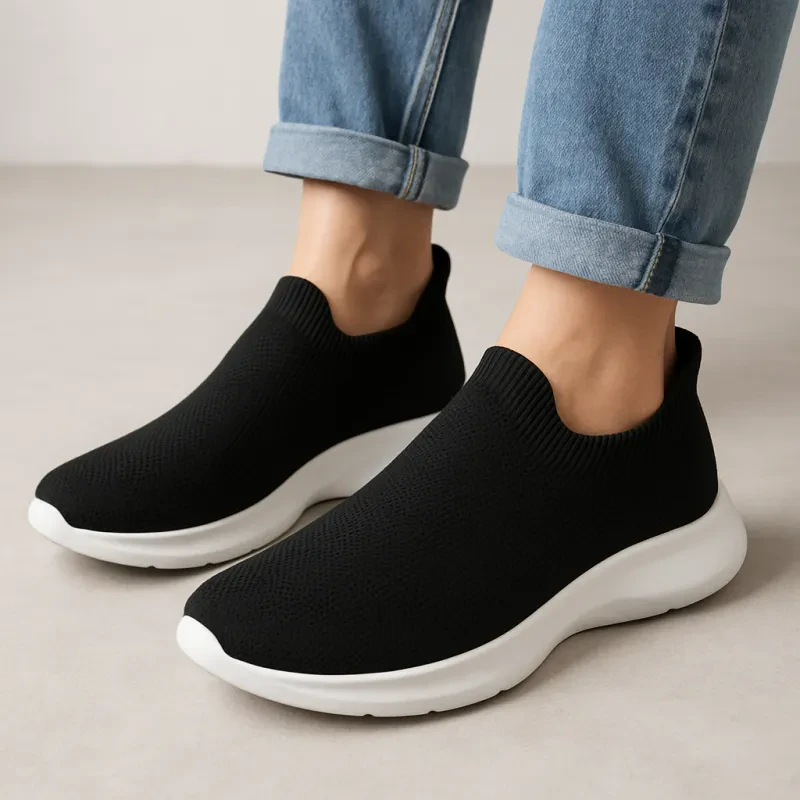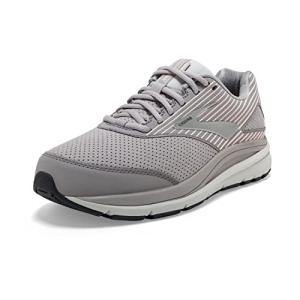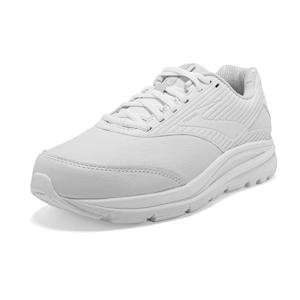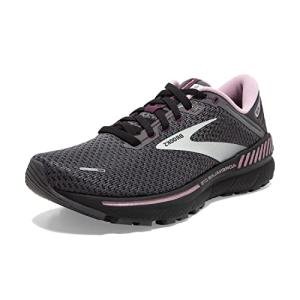Finding Your Perfect Tennis Racquet: A Complete Guide to Match Your Playing Style
Choosing the right tennis racquet can make a big difference in your game. A good racquet helps you hit better shots and feel more comfortable on the court.
The perfect tennis racquet for you depends on your skill level, playing style, and physical traits.

When picking a racquet, think about its size, weight, and balance. These factors affect how the racquet feels and performs.
Head size is important too. Bigger heads give more power, while smaller ones offer more control.
Grip size matters for comfort and preventing injury.
Most adults do well with a 4 3/8 inch grip. You can always add an overgrip to make it bigger if needed.
Don't forget to consider the racquet's material and string pattern as well.
Key Takeaways
- The ideal racquet matches a player's skill level, style, and physical characteristics
- Head size, weight, and balance affect racquet performance and feel
- Grip size and racquet composition are crucial for comfort and injury prevention
Understanding Racquet Specs
Tennis racquet specs play a big role in how a racquet performs. Key factors include weight, balance, head size, and string pattern. These specs affect power, control, and feel.
Weight and Balance
Racquet weight ranges from about 250 to 340 grams. Lighter racquets are easier to swing but provide less stability. Heavier racquets offer more power and stability but can be harder to maneuver.
Balance refers to where the weight is distributed.
Head-heavy racquets provide more power, while head-light ones offer better control. Even-balance racquets fall in between.
Players should try different weights and balance points to find what feels best. Beginners often do well with lighter, more balanced racquets. Advanced players may prefer heavier, head-light racquets for more control.
Head Size and Sweet Spot
Head size affects the racquet's power and forgiveness. Larger heads (100-115 square inches) have bigger sweet spots, making them more forgiving on off-center hits. Smaller heads (85-98 square inches) offer more control but less power.
The sweet spot is the area on the strings that gives the best response.
Larger head sizes have bigger sweet spots, making them easier to play with. Smaller heads have smaller sweet spots but allow for more precise shot placement.
Beginners and intermediate players often benefit from mid-size to oversize heads. Advanced players may prefer mid-size or even smaller heads for maximum control.
String Pattern and Tension
String pattern refers to the number of main (vertical) and cross (horizontal) strings. Common patterns include 16x19 and 18x20. Open patterns (like 16x19) offer more spin and power. Dense patterns (like 18x20) provide more control and durability.
String tension affects power and control. Lower tension (40-50 pounds) gives more power and a larger sweet spot. Higher tension (55-65 pounds) offers more control but less power.
Players should experiment with different patterns and tensions. Beginners might start with an open pattern and medium tension. Advanced players often prefer denser patterns and higher tensions for more control.
Length and Maneuverability
Standard adult racquets are 27 inches long. Some racquets are longer, up to 29 inches.
Longer racquets offer more reach and power but can be harder to maneuver.
Maneuverability depends on the racquet's weight, balance, and length. Lighter, shorter racquets are easier to handle, especially at the net. Heavier, longer racquets can be harder to maneuver but provide more stability on groundstrokes.
Beginners and doubles players often prefer standard or slightly shorter lengths for better maneuverability. Singles players might opt for longer racquets to get extra reach on serves and groundstrokes.
Selecting the Right Racquet for Your Skill Level
Your tennis skill level plays a big role in choosing the right racquet. Different racquet features suit beginners, intermediate, and advanced players. Let's look at the best racquet traits for each skill level.
Beginner Tennis Racquet
New players should look for racquets with larger heads. A bigger head size gives more power and a larger sweet spot. This helps beginners hit the ball well even if they don't make perfect contact.
Lightweight racquets are also key for beginners. They're easier to swing and cause less arm strain. A good weight range is 9-10 ounces.
Beginners benefit from racquets with more flex. These racquets absorb shock better, which is good for arm comfort.
Pre-strung racquets work well for new players. They offer a good mix of power and control without needing to choose strings.
Intermediate Tennis Player
As players improve, they can handle racquets with smaller heads. A mid-plus size (98-105 square inches) gives a nice balance of power and control.
Intermediate players often prefer slightly heavier racquets. A weight of 10-11 ounces offers more stability and power.
Racquets with open string patterns work well at this level. They provide extra spin, which helps with shot variety.
Many intermediate players like racquets with medium stiffness. These offer a mix of power and feel.
Advanced Tennis Player
Advanced players often choose racquets with smaller heads. A midsize (85-97 square inches) gives more control and precision.
Heavier racquets suit skilled players. Weights of 11-12+ ounces provide stability for hard-hitting shots.
Dense string patterns are common in advanced racquets. They offer more control and durability.
Many pro-level racquets have stiff frames. These provide power for players with fast swings.
Advanced players may prefer longer racquets. The extra length (27.5-29 inches) can boost serve power and reach.
The Importance of Racquet Composition

The way a tennis racquet is made affects how it feels and performs on the court. Key factors like frame stiffness and materials used have a big impact on comfort, power, and control.
Frame Stiffness and Comfort
Frame stiffness plays a crucial role in racquet performance. Stiffer frames offer more power but less comfort. Flexible frames provide better comfort and control.
Very stiff racquets can be harsh on the arm and may increase injury risk. They suit players with smooth strokes who generate their own power.
More flexible racquets absorb shock better. They work well for players with fast swings who want more feel for the ball.
Most racquets fall somewhere in the middle. Finding the right balance of stiffness is key for comfort and performance.
Racquet Materials and Swingweight
The materials used in a racquet affect its weight, balance, and swingweight. Common materials include graphite, carbon fiber, and aluminum.
Heavier racquets (over 11 oz) offer more stability and power. They suit strong players with developed technique.
Lighter racquets (under 10 oz) are easier to maneuver. Beginners and juniors often prefer them for added speed.
Swingweight measures how heavy a racquet feels when swung. Higher swingweight increases power but requires more strength. Lower swingweight improves maneuverability.
Racquet composition greatly impacts playability. Testing different options helps find the best fit for your game.
Finding the Ideal Grip Size

Grip size plays a key role in tennis racquet performance. The right size helps players control their shots and avoid injury.
Most men choose between 4 3/8 inch and 4 1/2 inch grip sizes. If unsure, it's better to pick the smaller size. Players can always make the grip bigger later.
To find the right grip size, players can try these methods:
-
Finger test: Hold the racquet in a handshake grip. A finger should fit between the fingertips and palm.
-
Ruler method: Measure from the middle crease of the palm to the tip of the ring finger.
Here's a quick guide to grip sizes:
| Size | Inches | Millimeters |
|---|---|---|
| 0 | 4 | 101.6 |
| 1 | 4 1/8 | 104.8 |
| 2 | 4 1/4 | 108.0 |
| 3 | 4 3/8 | 111.1 |
| 4 | 4 1/2 | 114.3 |
| 5 | 4 5/8 | 117.5 |
4 3/8 inches is the most common grip size for men's racquets. It offers a good balance of control and maneuverability.
A grip that's too small can cause wrist strain. One that's too big can make it hard to swing freely.
Players can fine-tune their grip size with overgrips. These thin wraps add a bit of thickness and can improve comfort.
Measuring Performance Factors

Tennis racquets have key traits that affect how they perform. These traits shape how much power and control you get when hitting the ball. They also impact the racquet's stability during play.
Power vs. Control
Power and control are two main factors in racquet performance. Power racquets give more energy to your shots. They have larger heads and are lighter. This helps beginners hit the ball farther.
Control racquets offer more precision. They have smaller heads and are heavier. This gives skilled players better aim and spin control.
Most racquets fall somewhere between pure power and pure control. Players should pick based on their style and skill level.
Choosing the right balance can boost your game. Try different types to see what feels best.
Stability and Stiffness
Stability refers to how steady a racquet stays when hitting the ball. Stiffer racquets tend to be more stable. They don't flex as much on impact.
A stable racquet helps with accuracy. It reduces unwanted vibrations. This can make your shots more consistent.
Stiffness affects both power and control. Stiffer racquets can provide more power. But they may transmit more shock to your arm.
Flexible racquets absorb more energy. This can help reduce arm strain. But it may also decrease power slightly.
Players should test racquets to find their ideal stiffness. What works best can vary based on playing style and physical condition.
Popular Racquet Models and Their Features

Tennis racquets come in many styles to suit different players. Top brands offer models with unique features for power, control, and comfort. Let's look at three popular options.
Babolat Pure Aero
The Babolat Pure Aero is known for its power and spin potential. It has a 100 square inch head size and weighs about 11.2 ounces strung.
The racquet uses Babolat's FSI Spin technology. This creates wider string spacing at the top of the frame. Players can generate more spin on their shots with this design.
Its aerodynamic frame cuts through the air quickly. This helps players swing fast and add even more spin. The Pure Aero is popular with advanced players who like to hit with heavy topspin from the baseline.
Wilson Clash 100
The Wilson Clash 100 offers a mix of power and control. It has a 100 square inch head and weighs around 11 ounces strung.
Wilson uses their FreeFlex and StableSmart technologies in this racquet. These make the frame bend in certain ways during impact. This gives players more control and a connected feel to the ball.
The Clash 100 is very comfortable to use. It reduces shock and vibration on impact. This makes it a good choice for players with arm issues or those who want to avoid injury.
Babolat Boost Drive
The Babolat Boost Drive is made for beginners and casual players. It has a large 105 square inch head size. This gives a bigger sweet spot for easier hitting.
At only 9.8 ounces strung, it's very light and easy to swing. The frame is made of graphite composite. This keeps the racquet durable but affordable.
The Boost Drive has an open string pattern. This helps new players generate more spin on their shots. Its head-light balance makes it easy to maneuver at the net.
Accessory Selection: Strings and Beyond

Picking the right accessories can greatly improve your tennis game. Strings are a key component that affect your racquet's performance and feel.
Choosing Your Strings
Selecting the right tennis strings is crucial for your racquet's performance. String gauge affects playability and durability. Thinner strings (higher gauge) offer more spin and control, while thicker strings (lower gauge) provide more durability.
Tension also matters. Higher tension gives more control, while lower tension offers more power. Many players use a string finder to help choose the best option.
String material is another factor. Synthetic gut is a popular all-around choice. Multifilament strings offer comfort and power. Polyester strings provide excellent spin and control.
Polyester vs. Natural Gut Strings
Polyester strings are known for their durability and spin potential. They're popular among advanced players who hit with heavy topspin. These strings maintain tension well but can feel stiff.
Natural gut strings offer excellent feel and power. They're made from cow intestines and provide great comfort and tension maintenance. However, they're less durable and more expensive than synthetic options.
Many pros use a hybrid setup, combining polyester mains with natural gut crosses. This setup blends the benefits of both string types. It offers good spin and control from the polyester, with added comfort from the natural gut.
Decoding Tennis Jargon: What You Need to Know

Tennis has its own language. Learning key terms will help you choose the right racquet. Let's break down some common jargon.
Tennis rackets come in various specs. Racquet weight is crucial. It's usually measured in ounces or grams.
Unstrung weight refers to the racket's weight without strings. Light rackets are easier to swing but may offer less power.
Head size matters too. Oversized racquets have larger sweet spots, making them more forgiving for beginners.
Racket length affects reach and power. Standard adult racquets are 27 inches long.
Balance is described as head-light, head-heavy, or even. Head-light racquets are easier to maneuver.
Frame stiffness affects power and control. A flexible frame offers more control but less power.
Here's a quick guide to some key racquet specs:
- Weight: 8-12.5 oz (unstrung)
- Head Size: 85-135 sq inches
- Length: 27-29 inches
- Balance: 4-12 points head-light to head-heavy
Many brands offer a racket finder tool to help players choose. It considers factors like skill level and playing style.
Making the Purchase: Price and Value Considerations

Tennis racquets come in a wide range of prices. Basic models start around $20, while high-end racquets can cost over $200. The price of a racquet depends on its materials, brand, and features.
Beginners can often find good value in mid-range racquets. These offer a balance of performance and affordability. More experienced players may benefit from investing in higher-end models that suit their specific needs.
When choosing a tennis racquet, it's important to consider:
• Your skill level
• Playing style
• How often you play
• Budget
The best tennis racket for a player balances price with features that match their needs. A more expensive racquet doesn't always mean better performance for every player.
Many stores offer demo programs. These allow players to test racquets before buying. This can help ensure the racquet fits well with the player's style and skill level.
Frequently Asked Questions
Choosing the right tennis racquet involves considering grip size, head size, string pattern, and playing style. These factors impact comfort, control, and performance on the court.
How do I determine the appropriate tennis racquet grip size for my hand?
To find your grip size, measure from the middle crease of your palm to the tip of your ring finger. This length in inches matches your grip size. A correct grip size prevents hand strain and improves control.
Most adult grip sizes range from 4 inches to 4 5/8 inches. If between sizes, pick the smaller one and add an overgrip if needed.
What are the key factors to consider when choosing a tennis racquet for beginners?
Beginners should look for racquets with larger head sizes and lighter weights. These features offer a bigger sweet spot and easier maneuverability.
A head size between 100-110 square inches works well for most new players. Racquet weight should be around 9-10 ounces for adults.
How does racquet head size and string pattern affect my game?
Head size impacts the power and forgiveness of a racquet. Larger heads provide more power and a bigger sweet spot. Smaller heads offer more control.
Meanwhile, string pattern affects spin and control. Open string patterns (16x19) generate more spin. Denser patterns (18x20) offer more control and durability.
At what age should the size of a junior tennis racquet be increased?
Junior racquet size should increase as the child grows. Start with a 19-21 inch racquet for ages 4-5. Move up to 23-25 inches for ages 6-8.
By age 9-10, most kids can use a 26-inch racquet. Full-size 27-inch racquets suit most players 11 and older.
Is there a difference in racquet selection for recreational versus competitive play?
Recreational players often prefer lighter racquets with larger heads for easier play. These racquets offer more power and forgiveness.
Meanwhile, competitive players usually choose heavier racquets with smaller heads. These provide more control and shot precision for advanced techniques.
How can I tell if a tennis racquet is the right fit for my playing style?
The best way to find a good fit is to demo different racquets. Pay attention to how each racquet feels during various shots and movements.
A well-suited racquet enhances your strengths and complements your style. It should feel comfortable and allow you to play your best game.







